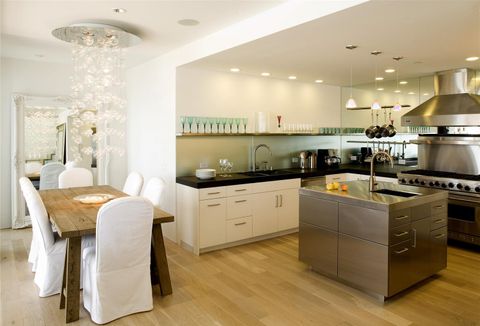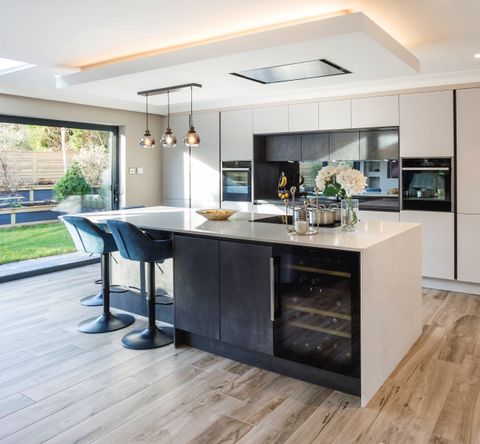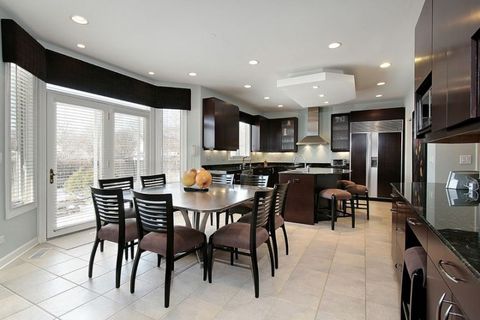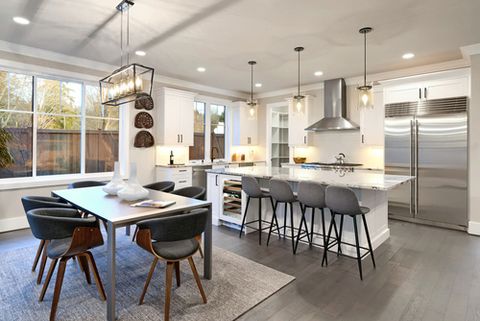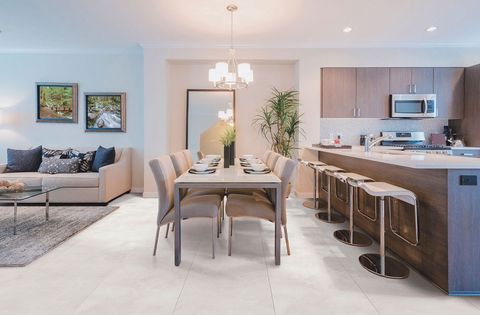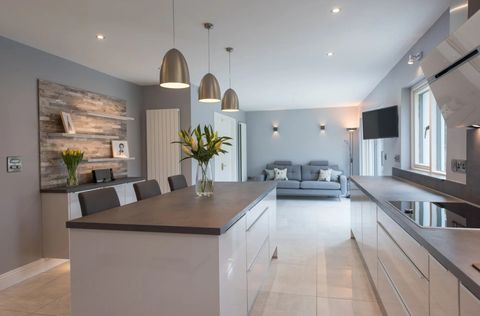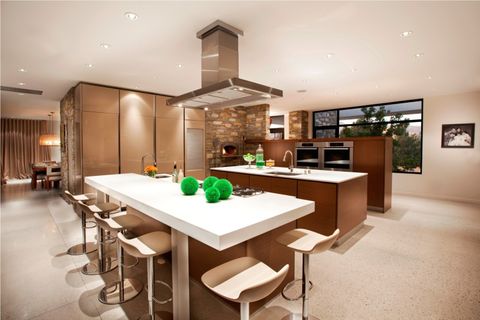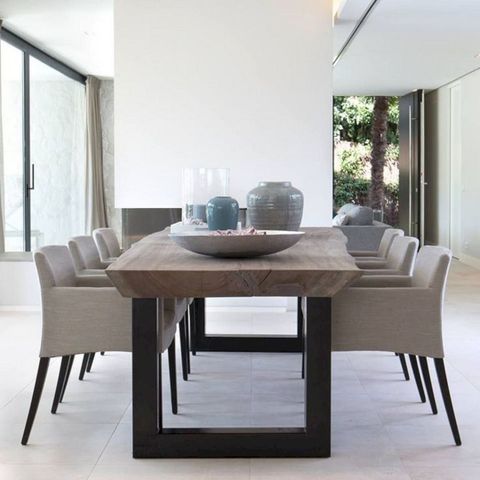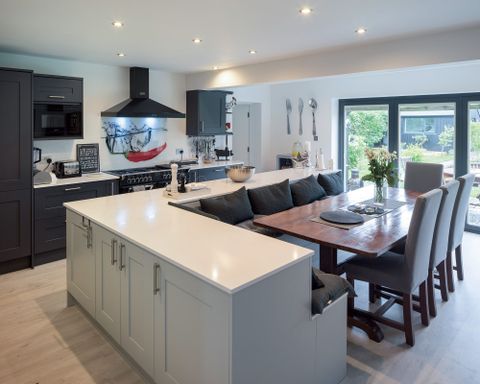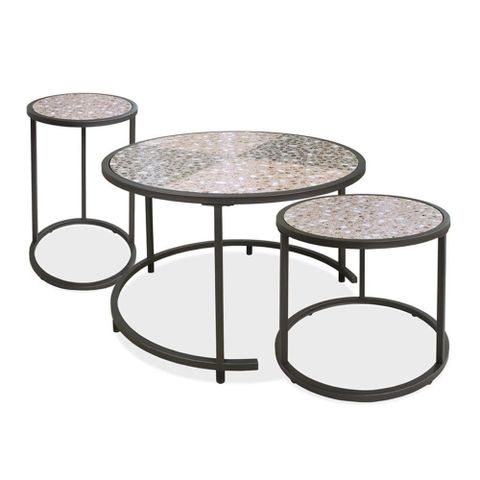Picture this: you’re hosting friends for dinner, the kitchen is open, and everyone’s gathered around a table that somehow manages to be both practical and beautiful. It’s the kind of moment that makes you appreciate good design. But finding that perfect balance between function and form isn’t easy. You want something that works for daily meals and special occasions, looks great with your kitchen decor, and fits seamlessly into your open-concept space.
Open kitchens have become incredibly popular, creating larger, more connected living spaces. But they also present unique challenges when it comes to choosing the right dining table. Unlike traditional setups where the kitchen is separated from the dining area, an open kitchen means your dining table becomes part of the main living space. This means it needs to work on multiple levels – functional for everyday use, stylish enough to complement your kitchen aesthetics, and versatile enough to handle both casual meals and formal dinners. The pressure is on, but it’s also an opportunity to create something truly special.
Size Matters: Scale and Proportion in Open Spaces
When selecting a dining table for an open kitchen, size is absolutely crucial. A table that feels massive in a small kitchen can overwhelm the entire space, while one that’s too small might get lost in a large open area. Think about the actual dimensions of your kitchen and how much room you have to move around. Consider the traffic flow – you’ll want enough clearance for people to walk around the table comfortably. For instance, a 6-foot rectangular table might work perfectly in a 15×20 foot open kitchen, but could feel cramped in a 12×15 foot space. Remember, the table should enhance the room rather than dominate it. A good rule of thumb is to leave at least 36 inches of clearance around the table for easy movement.
Material Choices: From Wood to Metal and Everything In Between
Different materials bring different vibes to your open kitchen. Wood tables offer warmth and classic appeal, making them perfect for traditional or rustic kitchens. They tend to age beautifully and can handle daily wear well. Metal tables, especially those with wooden tops, add modern flair and are often more durable for busy households. Glass tables can make small spaces feel bigger and are easy to clean, though they might not be the best choice for homes with young children. Consider the overall aesthetic of your kitchen when choosing material. If you have stone countertops and stainless appliances, a sleek metal table might complement everything perfectly. For a cozy, farmhouse-style kitchen, a solid wood table will probably fit right in. Sometimes, combining materials works wonderfully – think of a wooden table with metal legs for that contemporary farmhouse look.
Shape and Layout: Making the Most of Your Space
The shape of your dining table should work with your open kitchen’s layout. Rectangular tables are great for longer spaces and can easily accommodate more guests. Round tables promote conversation and work well in smaller open kitchens where you want to maximize space. Square tables offer a good middle ground and can be surprisingly flexible. Think about the shape of your kitchen island, if you have one. Do you want your table to complement it, or do you prefer to create a distinct dining area? Sometimes a curved table can soften harsh angles in a modern kitchen. Consider how you actually use your space – if you entertain frequently, a longer table might be better. If you mostly cook and eat family meals, a smaller, more intimate table might be ideal. The key is matching the table shape to both your lifestyle and your space.
Style Integration: Bridging Kitchen and Dining Areas
In open kitchens, your dining table becomes a visual bridge between the kitchen and living areas. This means it should complement rather than compete with your kitchen’s design elements. If your kitchen features modern clean lines, a sleek table with minimalist details will blend beautifully. For traditional kitchens with ornate cabinetry, a table with classic details like carved legs or intricate woodwork will fit right in. Pay attention to color coordination too. If your kitchen has neutral tones, you might want to add some bold color with your table, or choose a table that matches your kitchen’s dominant colors. Sometimes the most successful approach is to pick a table that’s slightly different from your kitchen but still harmonious with it. This creates visual interest while maintaining unity throughout the space.
Functionality First: Practical Considerations
Let’s talk about the real-world stuff that matters every day. Will you be using the table primarily for meals, or does it need to double as a workspace? Do you have small children or pets who might knock things over? These practical concerns shouldn’t be ignored. Look for tables with rounded edges for safety, or consider a table that’s just a bit higher than standard for easier cleaning underneath. If you have limited storage, a table with built-in compartments or a lift-top feature can be a game changer. Consider whether you need extendable tables for occasional entertaining. Some tables can seat 4-6 people normally but expand to accommodate 8-10 when needed. Also think about maintenance – how often will you need to clean the table, and does the material handle spills and stains well? A table that’s beautiful but impractical won’t last long in a busy household.
Lighting and Ambiance: The Final Touch
Don’t forget about lighting when choosing your dining table. The right light fixture above your table can transform the entire atmosphere of your open kitchen. Pendant lights that hang directly over the table create a focal point and provide excellent task lighting for eating. Consider the height of your ceiling – a low ceiling might call for a lower hanging light, while high ceilings can handle more dramatic fixtures. The style of your lighting should match your table and kitchen. A modern table might pair well with sleek, geometric pendants, while a rustic table might benefit from warm, traditional fixtures. Also think about ambient lighting in the room – if your kitchen gets lots of natural light during the day, you might need additional lighting options for evening dinners. Sometimes a combination of overhead lighting and table lamps can create the perfect balance of brightness and warmth.
Choosing the right dining table for an open kitchen is both an art and a science. It requires balancing practical needs with aesthetic preferences, considering how the table will fit into your daily life while also enhancing your home’s overall look. The key is to start with what you really need – the table should serve your lifestyle first and foremost. Then layer in the design elements that make it beautiful and cohesive with your kitchen. Remember, there’s no one-size-fits-all solution. What works for someone with a modern, minimalist kitchen might not work for another person with a cozy, traditional setup. Trust your instincts, measure carefully, and don’t be afraid to ask for help from professionals when needed. Ultimately, your dining table should make you happy every time you sit down to eat, whether it’s a quick breakfast or an elaborate dinner party. It’s not just furniture – it’s the heart of your home’s social life.

